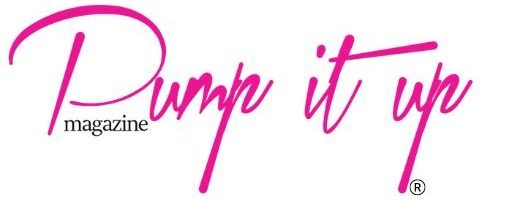Your fashion career’s growth significantly depends on the strategic recruitment choices you make. From selecting potential fashion houses to associating with impactful co-designers, your decisions can carve the path to astounding success.
You must ensure that your career moves align with your creative aspirations as well as professional goals. In order to do so, many fashion professionals are resorting to recruiting agencies for suitable opportunities.
With trusted recruitment agencies like SJR London, you can make informed decisions and elevate your career trajectory. Have a look and discover more here on their website.
Table of Contents
Identifying Fashion Career Paths
Fashion careers offer a diverse range of fields, each with unique skills and responsibilities. Your future in the industry can be richly varied.
Fashion Design
This involves the creation and production of clothing and accessories. As a designer, you’ll craft new styles or revamp existing ones.
Fashion Merchandising/Sales and Marketing
This field merges design and business. You’ll estimate sales trends, manage pricing, and promote products to enhance sales.
Fashion Styling
Stylists select clothing and accessories for photo shoots, fashion shows, and clients. Collaboration with photographers and designers is key.
Fashion Editing
Fashion editors curate content for publications, directing the aesthetic and editorial direction of fashion media.
Fashion Public Relations
PR professionals manage brand reputation by coordinating press releases and promotional events to maintain a positive image.
Retail Management
Retail managers oversee operational tasks like staff management, inventory control, and sales performance to ensure efficient store operations.
Textile/Apparel Production
This area focuses on fabric production, including pattern making, fabric selection, and quality control.
Fashion Journalism
Journalists write about designers, trends, and events to inform and engage audiences through various media outlets.
Fashion Education
Educators teach subjects related to fashion to prepare students for their future careers in the industry.
Strategic Recruitment in Fashion
Building a career in fashion requires understanding industry recruitment practices and trends. A strategic, multifaceted approach to recruitment is essential.
Aligning talent acquisition with business objectives and leveraging technology can help identify and secure the right candidates.
- Transparent Job Roles: Clearly define roles, including required skills and cultural fit, to attract like-minded candidates.
- Promote Your Brand: Showcase your brand’s values and culture on social media and through engaging job descriptions.
- Leverage Technology: Utilize Applicant Tracking Systems (ATS) and data analytics to improve your hiring process.
- Create Relationships: Network at industry events to build a talent pool of potential candidates.
- Incorporate Flexibility: Embrace the gig economy and remote opportunities to appeal to top talent.
An effective onboarding process ensures new team members receive necessary support from day one. Tracking recruitment metrics, such as employee turnover rate, can inform decisions and highlight areas for improvement.
Strategic recruitment focuses on building a sustainable workforce. Offering continuous training and development opportunities helps retain top talent.
Skills and Competencies Required
A career in the fashion industry demands a diverse set of skills. Here’s what you need in your professional toolkit.
What are foundational skills for the fashion industry?
Artistic abilities, leadership, trend forecasting, communication, and strategic marketing planning are crucial.
How important is digital savvy in fashion?
Expertise in digital marketing and social media is vital for brand management, positioning, and understanding customer preferences.
What analytical abilities are required?
Analytical skills are essential for sales data analysis, forecasting, market research, and consumer behavior analysis.
Are there technical skills needed in fashion?
Designing, sketching, fabric knowledge, and pattern making are vital technical competencies. Familiarity with wearable technology is a plus.
What business skills does one need to succeed in the industry?
Business knowledge, including financial acumen, operational efficiency, and negotiation skills, accelerates success.
Are leadership skills crucial in the fashion sector?
Yes. Team management, cross-functional leadership, and problem-solving abilities contribute to effective operations.
Do fashion entrepreneurs need different skill sets?
Beyond creative direction, entrepreneurs should understand business concepts and be web-savvy.
Importance of Networking
Networking is paramount for success in fashion. It goes beyond exchanging business cards; it’s about building meaningful relationships.
Attending events like runway shows and fashion weeks offers networking opportunities with industry professionals.
Building an online presence on platforms like Instagram and TikTok enhances your network. Social media is a powerful tool for making connections.
- Build Relationships: Forge genuine connections that can open doors in your career.
- Attend Fashion Events: Engage in industry parties, runway shows, and fashion weeks to network.
- Leverage Social Media: Use platforms like Instagram and TikTok to boost your visibility.
- Create Strategic Partnerships: Collaborate with photographers, designers, or brands to expand your portfolio and credibility.
Pursuing strategic partnerships fosters innovation, brand visibility, and market reach. Emphasize authenticity and proactivity in your networking efforts.
Leveraging Industry Experience
Navigating the fashion tech industry demands both technical expertise and a deep understanding of fashion.
Technology’s evolution sparks exciting career possibilities.
Essential Skills
Proficiency in digital design tools like CLO 3D, Marvelous Designer, and Blender is crucial. Understanding AI and machine learning aids in trend forecasting and personalizing experiences.
Fashion Tech Careers
Roles range from Tech Designer to Software Developer, integrating technology into fashion and optimizing e-commerce. UX designers and data analysts are increasingly important.
Future Outlook
Digital initiatives in fashion companies are expected to reach $15 billion annually by 2024. Combining creative and technical strengths in areas like AI, AR, supply chain automation, and sustainability is critical, as noted by Vogue.
Continuous Learning
The rapidly evolving industry necessitates staying abreast of new advancements and tools.
Sustainability Focus
A commitment to sustainable and circular design practices, focusing on materials and supply chains, is increasingly desired.
Recruitment Strategies for Success
Success in the fashion industry requires strategic recruitment. A clear understanding of job roles is essential. Major players like Louis Vuitton and Chanel offer precise job descriptions to attract suitable talent.
Leveraging technology is crucial. Potential candidates can be found on job boards, social media platforms, and industry-specific websites.
- Develop a Strong Employer Brand: Companies like H&M and Zara use social media to share behind-the-scenes insights and hiring opportunities.
- Engage Passive Candidates: Reach out to potential hires who aren’t actively seeking new roles through industry events and professional networks.
- Create a Positive Candidate Experience: Implement comprehensive onboarding, orientations, and mentorship sessions. Continuous support is key, as exemplified by Google’s approach.
- Prepare for Future Needs: Building a talent pipeline facilitates company growth. Brands like Zara adopt this strategy for expansion.
Networking and openly promoting vacancies help access prospective employees efficiently. Remember to maintain communication with candidates throughout the recruitment process to keep them engaged.
Fashion Career Earning Potential
Earnings as a fashion designer are influenced by factors like location, industry, experience, and education.
The average salary in the United States is around $62,452 but can range between $56,080 to $68,362. The Bureau of Labor Statistics reports a median annual wage of $79,290.
- Different Industries: The motion picture industry pays designers approximately $92,850 annually, while those in apparel and piece goods earn about $73,150.
- Location Influence: Earnings vary by state. New Hampshire averages $85,460 annually, whereas New York reports around $50,296.
- Experience and Education: Designers with more experience and education, especially in CAD software, earn higher salaries.
- Freelance Opportunities: Starting your own business or freelancing offers potential for higher earnings than salaried positions.
Highest paying states include Massachusetts ($104,210), New York ($99,020), and New Hampshire ($96,450). Employment is projected to grow 5% from 2023 to 2033, offering ample opportunities.
Role-Specific Recruitment Tips
Landing a dream job in fashion requires strategic planning. Here are some role-specific tips to guide you.
Utilize Specialized Job Boards
Platforms like FashionUnited, FashionJobs, and Brobston Group offer industry-specific listings matching your skills.
Expand Your Network
Join vocational groups, attend industry events, and leverage social media to connect with fashion professionals and discover opportunities.
Create a Professional Portfolio
Showcase your skills through a professional portfolio. Whether in design, styling, or marketing, an impressive portfolio enhances your appeal.
Master the Art of Cold Emails
Proactively send cold emails to companies and professionals of interest to uncover potential openings not listed online.
Keep Your Profiles Updated
Maintain updated LinkedIn profiles and resumes highlighting your education, experience, and skills.
Join Internships
Internships provide practical experience and can lead to full-time positions, strengthening your industry connections.
Stay Current with Trends
Read fashion publications, attend events, and follow influencers to stay informed about emerging styles.
Leverage Social Media
Use social media to connect with potential employers, find job openings, and demonstrate your passion for fashion.
Insights from Industry Experts
The fashion industry is fast-paced and demanding, going beyond the perceived glamour and creativity.
Working Environment
The industry operates beyond regular hours. Deadlines are critical, and designers often multitask on current and future collections.
Team Effort
Fashion is a collaborative effort. Appreciating the technical teams—fabric researchers, pattern makers, stylists—is essential for success.
Industry Demands
Resilience is required. Behind the scenes, long hours are spent perfecting every detail, often under tight deadlines.
Veteran Influence
Established professionals have earned their place through hard work. Their experiences teach that success is achieved through dedication.
Resources and Further Reading
Emulating professionals like Julia Blank, a stylist to tech executives, can refine your fashion career. She helps leaders hone their professional image.
Her process includes an initial consultation at the client’s home to understand preferences and evaluate styles.
| Steps | Description | Potential Issues |
| Color Analysis | Determines optimal wardrobe colors | Color perception differences |
| Wardrobe Review | Evaluates current style and preferences | Lack of clear style |
| Mood Board Creation | Visualizes future style direction | Defining personal style |
| Shopping Trip | Selects items based on budget and style | Budget constraints |
| Total Steps: 4 | Essential for Effective Styling | |
The table summarizes her process—a guide for aspiring stylists. Understanding challenges like aligning budget with preferences is beneficial.
Styling often involves addressing client insecurities, requiring sensitivity and understanding. It’s about providing emotional support, not just fashion advice.
Effective styling emphasizes authenticity and confidence, crafting a professional yet unique image without relying solely on expensive labels.
Unlocking Success
Apply your strategic recruitment choices to boost your fashion career. Sharpen your skills, leverage your experience, and network effectively. Pick prospects fitting your career path, implement successful strategies, and consult industry experts. Fuel your growth today!









